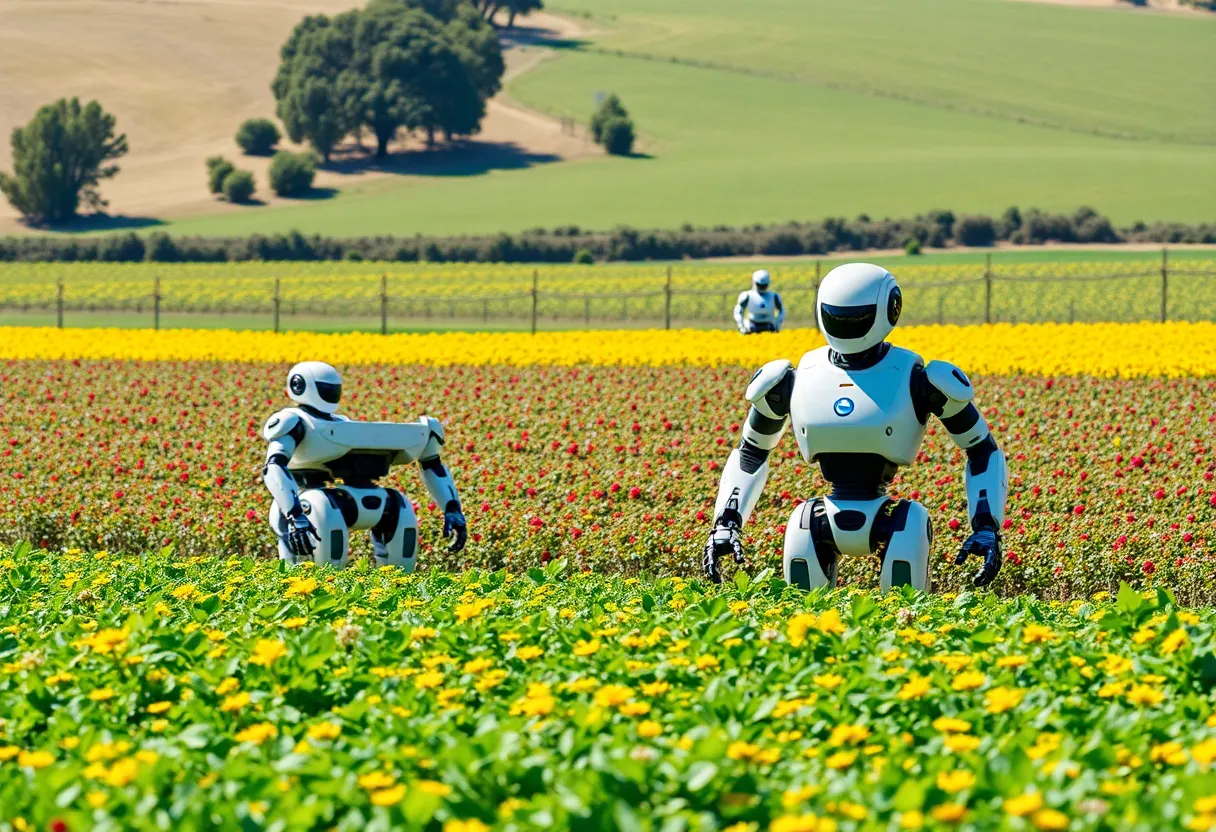California, August 26, 2025
News Summary
California farmers are facing a labor crisis due to recent immigration enforcement actions, leading to a shortage of agricultural workers. An estimated 88,000 positions remain unfilled annually, prompting many farmers to turn to automation for assistance. However, current regulations restrict the use of autonomous machines. While technology like robotics can help manage farms with fewer human workers, the agricultural sector warns that fully automating certain tasks like fruit picking remains a challenge. Calls for reform and paths for legalizing essential agricultural workers are growing amidst these challenges.
California farmers are grappling with a labor crisis stemming from recent immigration raids, leaving many fields unattended and exacerbating an already critical shortage of agricultural workers. An estimated 88,000 agricultural jobs in the U.S. remain unfilled each year, according to data from the Bureau of Labor Statistics. Farmers like Larry Jacobs, based in Central California, are increasingly turning to automation and technology as a solution, employing robots to reduce reliance on human labor amidst a challenging environment.
Under current California regulations, autonomous machines cannot operate without human supervision. Tyler Niday, the CEO of Bonsai Robotics, highlights that the existing laws were established in the 1970s, setting the stage for a push to modernize these regulations. By implementing robots, Jacobs reports being able to manage his farm with just half the human workforce he once needed. These machines come at a significantly lower cost, priced around $13,000 each, compared to traditional tractors that can cost up to $80,000.
The labor situation has worsened following immigration enforcement actions in Ventura County, where community organizers reported at least 35 arrests on local farms. Workers are increasingly hesitant to show up out of fear of deportation. Agriculture Secretary Brooke Rollins has indicated that the administration is focused on automation and reform to alleviate labor shortages, but her suggestion to recruit able-bodied adults on Medicaid as possible replacements for migrant farm workers has drawn criticism from many in California’s agricultural sector. Farmers, including citrus and avocado producer Helen McGrath, have condemned Rollins’ comments as uninformed, emphasizing the insult to the agricultural industry.
In the U.S., it is estimated that 42% of crop farmworkers lack work authorization, with California having the highest number of unauthorized workers contributing to the state’s economy. Farmers are not only faced with labor shortages but also with the looming threat of compromised food security if current immigration policies remain unchanged. Rollins has stated the need for strategic deportations while being mindful of the food supply chain. However, critics assert that fully automating the agricultural workforce is not a viable option, especially for delicate tasks like fruit picking, which requires considerable skill and care typically provided by human workers.
Historically, initiatives to fill agricultural roles with welfare recipients have resulted in high failure rates and significant crop losses, according to Manuel Cunha from the Nisei Farmers League. Despite these challenges, there is a broader recognition that national food policy is intricately linked to national security policy. The administration has initiated requests for bringing foreign workers under temporary visa programs to support agriculture, indicating a potential shift in policy to address the ongoing labor crisis.
There are growing calls for open dialogue with the administration to explore pathways for legalizing essential migrant workers, particularly within the agriculture and service industries. Farmers and industry experts alike are advocating for a balanced approach to immigration reform that would safeguard food production while addressing labor shortages.
FAQ Section
What is the current labor situation among California farmers?
California farmers are experiencing a significant labor shortage exacerbated by recent immigration raids, leaving many agricultural jobs unfilled. Current estimates suggest nearly 88,000 agricultural positions remain vacant annually in the U.S.
How are farmers responding to the labor crisis?
Many farmers are turning towards automation and technology to fill labor gaps. This includes utilizing robots designed for agricultural tasks, which allow farmers to operate with a significantly reduced human workforce.
What are the challenges associated with automation in agriculture?
Farmers face challenges due to existing regulations that restrict the use of autonomous machines without human oversight. Additionally, certain agricultural tasks, particularly fruit picking, still require human labor due to their complexity.
What has been the impact of immigration enforcement on the workforce?
Recent immigration raids have led to arrests and increased fears among farmworkers, causing many to avoid work, thereby exacerbating the labor shortage in agriculture.
Key Features Overview
| Feature | Details |
|---|---|
| Labor Shortage | 88,000 agricultural jobs unfilled annually in the U.S. |
| Automation Usage | Robots help manage farms with up to 50% less human labor. |
| Cost of Equipment | Robots priced at $13,000 vs full-sized tractors at $80,000. |
| Regulation Challenges | California laws restrict autonomous machines without human oversight. |
| Impact of Immigration Raids | 35 arrests reported, resulting in reduced workforce availability. |
| Criticism of Proposed Solutions | Suggestions for hiring from Medicaid recipients faced backlash. |
Deeper Dive: News & Info About This Topic
- Los Angeles Times: No Amnesty for Farmworkers
- Wikipedia: Agriculture in the United States
- Farmonaut: California’s Agricultural Labor Crisis
- Google Search: California Agricultural Labor Crisis
- The Guardian: Trump’s Agriculture Policies
- Encyclopedia Britannica: Agriculture
- CBS News: Farming Automation
- Google Scholar: Agricultural Automation
- Future Farming: Agricultural Robotics Market
- Google News: Agricultural Automation

Author: STAFF HERE SAN DIEGO WRITER
The SAN DIEGO STAFF WRITER represents the experienced team at HERESanDiego.com, your go-to source for actionable local news and information in San Diego, San Diego County, and beyond. Specializing in "news you can use," we cover essential topics like product reviews for personal and business needs, local business directories, politics, real estate trends, neighborhood insights, and state news affecting the area—with deep expertise drawn from years of dedicated reporting and strong community input, including local press releases and business updates. We deliver top reporting on high-value events such as Comic-Con International, San Diego County Fair, and San Diego Pride Festival. Our coverage extends to key organizations like the San Diego Regional Chamber of Commerce and United Way of San Diego County, plus leading businesses in biotechnology, healthcare, and technology that power the local economy such as Qualcomm, Illumina, and Scripps Health. As part of the broader HERE network, including HEREAnaheim.com, HEREBeverlyHills.com, HERECostaMesa.com, HERECoronado.com, HEREHollywood.com, HEREHuntingtonBeach.com, HERELongBeach.com, HERELosAngeles.com, HEREMissionViejo.com, and HERESantaAna.com, we provide comprehensive, credible insights into California's dynamic landscape.





